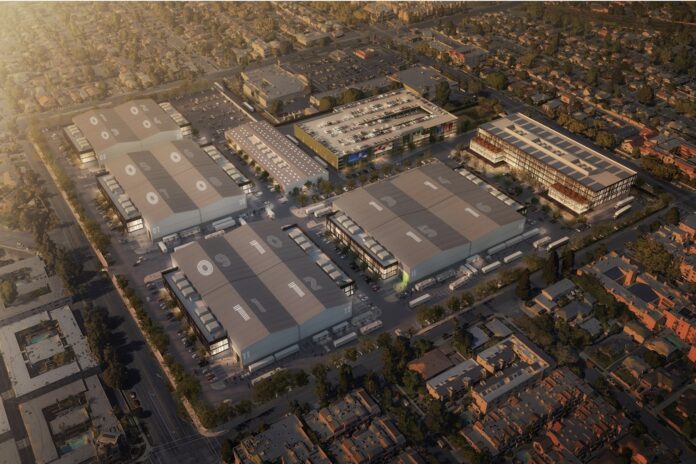The North Los Angeles office market continues to see a rise in vacancies and a trend in flight to quality, as employees continue to work from home.
“It’s struggling as all markets are,” Jim Lindvall, a managing director at Jones Lang LaSalle Inc. who specializes in leasing Valley office space, said. “We have a structural change in demand for office space. We have a definitive drop in demand.”
The office vacancy rate in the San Fernando Valley was 20.5% during the third quarter, up from 19.9% in the previous quarter, as many companies are choosing not to renew their leases and instead shifting to a fully virtual format, according to data from Colliers.
“Work-from-home is here to stay,” Lindvall said. “Hybrid work is happening. And that’s not going to change anytime soon.”

David Solomon, a senior executive vice president at Colliers specializing in the Valley office market, said there’s a greater desire for short-term leases.
“Everybody is trying to figure out what the new world post-pandemic is going to look like in terms of who’s coming back to work,” Solomon said.
Solomon thinks the biggest challenge facing the office market in terms of overall health is “the uncertainty that occupiers have and what their footprint needs to be.”
According to both Lindvall and Solomon, the office market is seeing a surge in flight to quality – a tendency for investors to move their money out of riskier assets and into more stable assets during times of economic uncertainty.
In the case of the San Fernando Valley office market, there’s been a huge demand for Class A buildings, but Class B and C buildings are struggling. Looking forward, Lindvall sees a future in which many of the low-rise lower-class office buildings in the Valley could be redeveloped into new housing.
“It’s really kind of difficult to get rid of some of the supply of office buildings downtown. You have major high-rise buildings,” Lindvall said. “Whereas in the Valley, you do have a decent amount of supply that’s contained within surface part one-, two-story office buildings, that theoretically, if values go down low enough, become land value and could change use.”
This would shrink office supply but may be more in line with where the market is headed, he added.
“Those tenants that are still rattling around in those buildings could move into the high-rise buildings while those buildings get repurposed. It consolidates the remaining office demand into a smaller base,” Lindvall said.
Industrial trends
The North Los Angeles industrial market suffered operationally during the extensive 148-day writer’s strike but is expected to bounce back following the strike’s termination on Sept. 26.
“In all of Southern California, the North Los Angeles market, from an industrial standpoint, probably got hit the hardest,” Greg Geraci, an executive vice president at Colliers and industrial specialist, said about the impact of the strike.
Geraci said the industrial markets faced a lot of layoffs and furloughs as a result of the strike.
Yet, despite operational hardships, the industrial market remained fairly healthy in terms of the occupancy side of things.
In the third quarter, Valley-area industrial vacancy rates rose 0.1% from 1% in the previous quarter, and there’s been no drop in sales value – despite higher interest rates – due to such sparse and sought-after availability.
“If you’re looking to purchase an industrial building, lease rates have basically doubled in 2022,” Geraci said. “Industrial did very well during Covid because of the demand for e-commerce.”
The average asking rate for industrial properties in San Fernando Valley and Ventura County was $1.61 per square foot during the third quarter. There was 173 million square feet of total inventory and 1.86 million square feet under construction, according to Colliers.
“The market is still strong. As we’ve seen the vacancy rate go up, there’s been more available product coming online, which is a positive,” Geraci said. “At the same time, tenant requirements have been a little quieter, but not drastically bad in any way.”
According to Geraci, tenant touring activity has been slower this past quarter, although he assumes it’s tied to the strike and will pick up again now that the strike is in the past.
“Compared to office leasing, it’s just a little bit of a slowdown compared to what it was, which is healthy because the vacancy rate was so low,” Geraci said.
Geraci expects there to be a bit of a lag period before production picks up again, but remains very optimistic about the market.
“Getting this strike behind us is a real positive,” he said.
